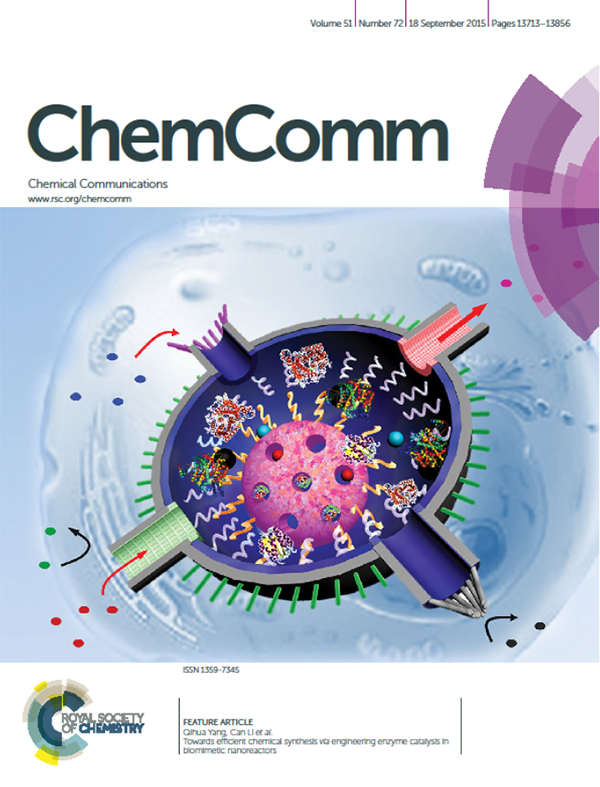A feature article entitled “Towards Efficient Chemical Synthesis via Engineering Enzyme Catalysis in Biomimetic Nanoreactors” has been recently published online in the journal of Chemical Communications (Jia Liu, Qihua Yang, and Can Li, Chem. Commun., 2015, 51, 13731-13739), and featured on the outside front cover of the same issue.

Biocatalysis with immobilized enzymes as catalysts holds enormous promise in developing more efficient and sustainable process for the synthesis of various valuable chemicals. However, how to maintain the extraordinary catalytic performance of enzymes in cells under in vitro condition is a key challenging issue seriously hampering the industrial-scale application of biocatalysts. To deal with this problem, a strategy focusing on mimicking the intracellular microenvironment of enzymes in support nanopores was put forward by our research group. Based on which, a series of research work has been carried out since 2003 and the corresponding outcomes have been published in the journals of Chem. Sci., Chem. Commun., Chem. Eur. J. and Langmuir, etc.
The recently published feature article has systematically summarized the research progress we have made in this area. A special emphasis was given to clarifying the importance of simulating the working environment and working patterns of intracellular enzymes in support nanopores. Research results have demonstrated that by modifying the mesoporous silica support with suitable organic moieties or polymers, it is possible to optimize the chemical as well as spatial microenvironment surrounding the enzyme molecules in nanopores in the light of the situation within intracellular environment. And this could be a useful approach to notably improve the catalytic activity and stability of biocatalysts in vitro. Besides that, confining multiple enzymes or enzyme and other catalytic entities inside nanopores is appealing for mimicking the ingenious array of multienzymatic systems in cells to catalyze cascade reactions with enhanced overall efficiency. The research concept underpinned in this feature article has soon received the attention of other researchers, and has been recommended in F1000Prime “as being of special significance in its field” by Faculty of 1000.
This work was supported by the National Natural Science Foundation of China and the Key Research Program of Chinese Academy of Sciences.
(By Jia Liu)